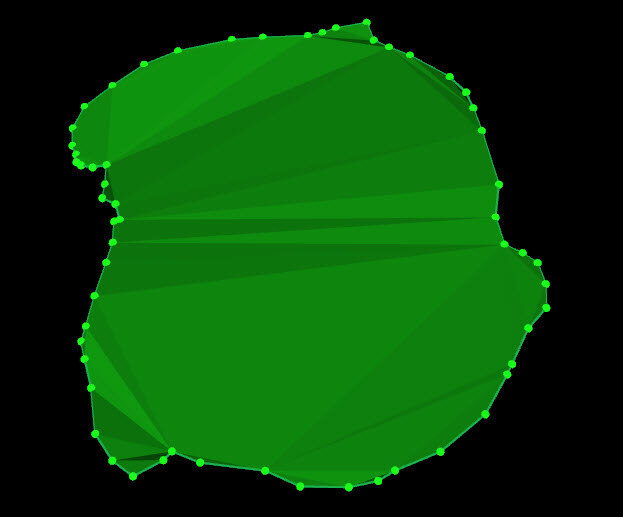How PIX4Dmapper calculates the Volume
This article explains how PIX4Dmapper calculate a volume by providing the functions being used within PIX4Dmapper.
PIX4Dmapper calculates the volume as follows:
1. The user draws a volume in the Volumes view. For more information about how to draw a Volume: How to draw a Volume.


2. PIX4Dmapper projects a grid with GSD spacing on the base.

3. For each cell i of the grid, its volume (Vi) is given by:
Vi = Li * Wi * Hi
Where:
Li = the length of the cell.
Wi = the width of the cell.
Hi = the height of the cell.
The Length (Li) and Width (Wi) are equal to the project's GSD.
Li =Wi = GSD
The Height (Hi) is given by:
Hi = ZTi - ZBi
Where:
ZTi = the terrain altitude of each cell at the center of the cell.
ZBi = the base altitude of each cell at the center of the cell.
Therefore, the volume Viof cell i is given by:
Vi = GSD*GSD* (ZTi - ZBi)
- ZTi is the altitude of the 3D terrain corresponding to the center of the cell i.
- ZBi is the altitude of the base surface of the volume corresponding to the center of the cell i .
4. PIX4Dmapper calculates 2 volumes:
- The Cut volume Vc is the volume between the base and the 3D terrain, when the terrain is higher than the base.
Cut volume = VC = VC1 + VC2 +...VCN
Where:
VC1...N = Cut volume for cell i..N
- The Fill volume VF is the volume between the base and the terrain when the terrain is lower than the base.
Fill volume = VF = VF1 + VF2 +...VFN
Where:
VF1...N = Fill volume for cell i...N.
5. The Total volume is given by:
Total Volume = VT =VC+ VF
For more information about the error in Volume calculation: Error estimation in volume calculation.
